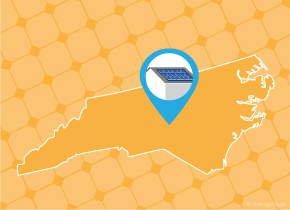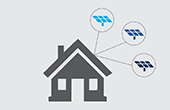History of solar policy in North Carolina
The Tar Heel state is a true success story in the solar industry. While today the state is nationally recognized as one of the top solar markets in the nation, North Carolina had only around 1 megawatt (MW) of solar electric capacity installed as of 2007. Through 2018 SEIA reports that the state firmly ranks 2nd in the nation in solar capacity with a total of 5,261 MW. This remarkable turnaround can be accredited to a variety of crucial factors, but North Carolina’s state level policies and regulations especially stand out for driving its growth.
The beginning of North Carolina’s legislative involvement in solar and renewable energy can be traced back to 2003 with the creation of NC GreenPower. This non-profit organization was the first statewide green power program in the nation and was designed to encourage the use of renewable energy by providing production payments for energy generated by solar, wind, small hydro, and biomass. Payments for solar systems specifically retired in 2018.
Soon after, North Carolina took the next major step towards large-scale solar development when the state implemented its own net metering program in 2005. Throughout the U.S., net metering has been crucial for the solar energy industry by allowing residents to store net excess generation in the electric grid. For North Carolina, policymakers have maintained a strong program by compensating excess solar energy at the higher retail rate, rather than the wholesale or avoided cost rate.
Two years later, in 2007, North Carolina became passed its Renewable Energy and Energy Efficiency Standard (RESP). Like net metering, state energy requirements have been imperative to the development of clean energy across the nation. In this case, North Carolina provided a mandate for investor-owned utilities to supply 12.5 percent of their retail electricity sales with renewables by 2021, while issuing that municipals utilities and electric cooperatives needed to supply 10 percent by the same date. Additionally, the legislation includes a carve-out provision for solar energy that required 0.2 percent of this technology to be supplied by 2019.
While many states with energy requirements are still in the midst of fulfilling their legislative goals, solar in North Carolina has developed so rapidly that it has easily met their compliance levels already. Although some have worried that this will curb growth, analysts at PV Magazine have calculated that from Governor Roy Cooper’s 2018 executive order to reduce greenhouse gas emissions 40 percent by 2025, there will be the potential for 25 gigawatts (GW) of new solar generation from this plan.
To support its net metering and RESP foundational policies, North Carolina developed a wide range of financial incentives that spurred substantial momentum in solar development. For example, when the state’s RESP was enacted in 2007, policymakers began to offer a 35 percent tax credit on the installed cost of solar systems, which was one of the most generous subsidies in the nation until it was retired in 2015. The state followed this up by issuing the Property Tax Abatement for Solar Electric Systems in 2008 that ensured homeowners they would be exempt from 80 percent of the appraised value from their installations. Finally, policymakers passed legislation the following year–in 2009–that authorized cities and counties to establish revolving loan programs to finance renewable energy and energy efficiency projects, which has made solar much more accessible to all residents.
The most enticing solar incentive right now for North Carolinians is without a doubt the Duke Energy – NC Solar Rebate Program, which began in 2017. As arguably the top rebate program in the nation, homeowners are eligible for a $0.60/Watt rebate for systems up to 10 kilowatts. These awards come a first-come, first-serve basis though so residents interested in solar should definitely try to apply as soon as possible.














